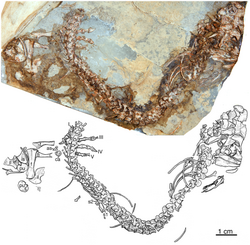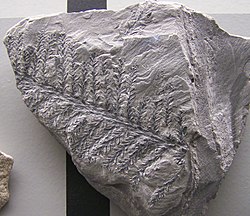Top Qs
Timeline
Chat
Perspective
Hamilton Quarry
From Wikipedia, the free encyclopedia
Remove ads
Hamilton Quarry is a Late Carboniferous lagerstätte near Hamilton, Kansas, United States. It has a diverse assemblage of unusually well-preserved marine, euryhaline, freshwater, flying, and terrestrial fossils (invertebrates, vertebrates, and plants).[1] The habitat of some of these faunal elements, as for anamniotic stegocephalians, is debated; although some of these have traditionally been interpreted as freshwater inhabitants,[2] some may have been euryhaline.[3][4] This extraordinary mix of fossils suggests it was once an estuary.[5] This type of Lagerstätte is considered a Konservat-Lagerstätte (or conservation lagerstätte), due to the quality the preservation of soft tissue (skin preservation).
The lagerstätte occurs within a paleovalley that was incised into the surrounding Carboniferous cyclothemic sequence during a time of low sea level and was then filled in during a subsequent transgression. The channel has a capping series of interbedded laminated limestones and mudstones for which are designated the Lagerstätte beds or ‘vertebrate horizon’. This facies contains a well-preserved mixed assemblage of terrestrial (conifers, insects, myriapods, reptiles), freshwater (ostracods), aquatic (amphibians, reptile), brackish or euryhaline (ostracods, eurypterids, microconchids, fish), and marine (brachiopods, echinoderms) fossils.
Remove ads
Paleobiota
Summarize
Perspective
According to thesis[6]
Color key
|
Notes Uncertain or tentative taxa are in small text; |
Vertebrates
Arthropods
Mollusks
Other animals
Lycophytes and ferns
Seed ferns
Gymnosperms
Spores and Pollen
Fuslinids
Remove ads
References
External links
Wikiwand - on
Seamless Wikipedia browsing. On steroids.
Remove ads
























